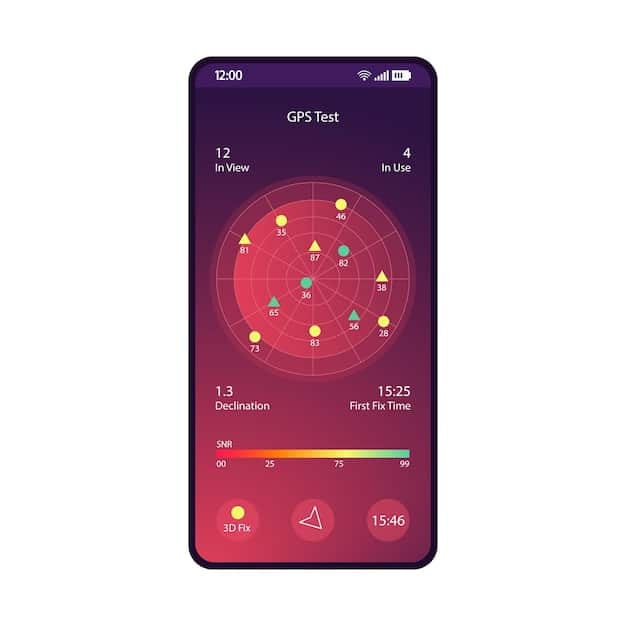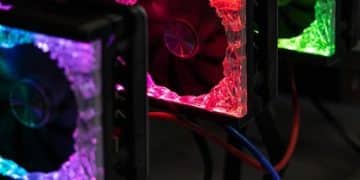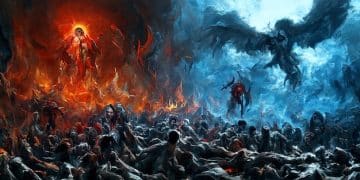Hearthstone Deck Building Guide: Craft a 65% Win Rate Deck

Hearthstone deck building involves understanding the meta, choosing a strategy, and optimizing your card choices to achieve a high win rate; this Hearthstone Deck Building Guide provides insights for crafting a meta-defining deck with a 65% win rate, detailing essential steps from meta analysis to playtesting and refinement.
Ready to dominate the Hearthstone arena? This Hearthstone Deck Building Guide: Craft a Meta-Defining Deck with a 65% Win Rate will empower you to create a deck that not only competes but conquers, giving you the edge you need to climb the ranks.
Understanding the Hearthstone Meta
Before diving into the specifics of deck building, it’s crucial to grasp the current state of the Hearthstone meta. Understanding which decks are popular and successful will inform your own deck-building choices and strategies.
Analyzing Popular Decks
Begin by identifying the most frequently played decks in your rank bracket. Resources like HSReplay.net and Vicious Syndicate can provide valuable data on deck popularity and win rates. Note the key cards, strategies, and weaknesses of these popular decks.
Identifying Counter Strategies
Once you know the dominant decks, consider which cards and strategies can effectively counter them. This doesn’t mean building a deck solely to counter one specific archetype, but rather incorporating tech cards and strategic choices that give you an advantage against common opponents.
Here are some considerations for analyzing the Hearthstone meta:
- Win rates: Identify the decks with the highest win rates against the field.
- Popularity: Note which decks are most commonly played, as you’ll encounter them frequently.
- Key cards: Recognize the core cards that make certain decks powerful.
- Weaknesses: Understand the vulnerabilities of popular decks and how to exploit them.
By staying up-to-date with the Hearthstone meta, you can make informed decisions about your deck’s composition and strategy, increasing your chances of success.
Choosing Your Deck Archetype
After analyzing the meta, the next step is to decide on the type of deck you want to build. Hearthstone decks generally fall into archetypes, each with its own play style and strengths. Choosing the right archetype for your play style and the current meta is essential.
Aggro Decks
Aggro decks focus on early aggression, aiming to defeat the opponent as quickly as possible. These decks typically use low-cost minions and direct damage spells to overwhelm the opponent before they can establish a strong board presence.
Control Decks
Control decks aim to survive the early game by using removal spells and defensive minions to control the board. They then transition to the late game, where they use powerful cards, and win conditions to close out the game.
Here are the Key Deck Archetypes:
- Aggro: Aggressive early game, overwhelming opponents quickly.
- Control: Survive early, dominate the late game with powerful cards.
- Midrange: Balanced approach, strong in both early and late game.
- Combo: Assemble specific cards for a game-winning combination.

Core Card Selection
Selecting the right core cards is paramount in deck building. These cards will form the backbone of your deck and define its overall strategy. Carefully consider the synergy, mana cost, and impact of each card you include.
Prioritizing Synergy
Synergy refers to how well cards work together to create powerful combinations. Choose cards that complement each other and reinforce your deck’s overall game plan. Synergistic decks are often more consistent and effective than decks that rely on individual strong cards.
Balancing Mana Cost
A well-balanced mana curve is essential for smooth gameplay. Aim for a distribution of cards across different mana costs to ensure you have plays available in the early, mid, and late game. A deck with too many high-cost cards may struggle against aggressive opponents, while a deck with too many low-cost cards may lack the power to close out the game.
Some card selection tips for Hearthstone:
- Mana curve: Ensure a smooth transition from early to late game.
- Card draw: Include cards that allow you to draw additional cards to maintain momentum.
- Removal: Add removal spells to deal with enemy threats.
- Tech cards: Consider including cards to counter specific strategies.
By choosing core cards that synergize well and balance your mana curve, you can create a deck that is both powerful and consistent.
Tech Card Integration
Tech cards are cards specifically included to counter certain strategies or decks. While not always necessary, the right tech cards can significantly improve your win rate against specific opponents. Consider which decks you’re struggling against and which tech cards can help.
Identifying Meta Threats
The first step in integrating tech cards is to identify the most prevalent threats in the meta. Which cards and decks are causing you the most trouble? Once you know what you’re up against, you can choose appropriate tech cards to counter them.
Effective Tech Card Choices
There are many different tech cards available in Hearthstone, each designed to counter specific strategies. Some popular examples include Eater of Secrets (to counter Secret decks), and The Black Knight (to destroy Taunt minions). Choose tech cards that are effective against multiple common threats, if possible.
Tech Cards Considerations:
- Silence effects: Silence powerful minions or deathrattles.
- Transform effects: Transform threatening minions into weaker ones.
- Card destruction: Destroy key cards or weapons.
- Board clears: Reset the board against swarm decks.
Playtesting and Refinement
Once you’ve built your initial deck, it’s time to put it to the test. Playtesting is crucial for identifying weaknesses, refining your strategy, and making necessary adjustments to your card choices.
Tracking Match Results
Keep track of your match results, noting your win rate against different archetypes. This data will help you identify which matchups are favorable and which ones need improvement. Pay attention to specific cards that are consistently underperforming or overperforming.
Making Data-Driven Adjustments
Based on your playtesting results, make data-driven adjustments to your deck. Replace underperforming cards with more effective alternatives, adjust your mana curve, or add tech cards to counter specific threats. Don’t be afraid to experiment and iterate until you find the optimal configuration.

Play Testing Key Points:
- Analyze win rates: Track your performance against various decks.
- Identify weaknesses: Pinpoint problematic matchups and cards.
- Experiment: Test different card combinations and strategies.
- Adapt: Adjust your deck based on your findings.
Advanced Deck Building Strategies
Once you’ve mastered the basics of deck building, you can explore more advanced strategies to further optimize your decks and gain a competitive edge. These strategies include understanding card advantage, tempo, and value.
Understanding Card Advantage
Card advantage refers to having more cards in hand than your opponent. Maintaining card advantage allows you to have more options available and outmaneuver your opponent. Card draw cards, value-generating minions, and efficient removal spells can help you gain and maintain card advantage.
Mastering Tempo
Tempo refers to the pace of the game. Gaining tempo means making plays that put you ahead of your opponent in terms of board control and mana efficiency. Tempo plays often involve using cards that provide immediate value or disrupt the opponent’s game plan.
Key Building Strategies:
- Card advantage: Having more cards in hand than your opponent.
- Tempo: Gaining control of the game’s pace.
- Value: Generating maximum impact from each card played.
- Synergy: Combining cards for powerful effects.
| Key Element | Brief Description |
|---|---|
| 🔍 Meta Analysis | Understand popular decks and counter-strategies. |
| 🃏 Core Cards | Synergize mana costs for seamless gameplay. |
| ⚙️ Tech Cards | Tactical inclusions enhancing win rates. |
| 📊 Play Testing | Adjust to optimize your configuration. |
FAQ Section
▼
The Hearthstone meta refers to the most popular and effective decks and strategies at any given time. It constantly evolves as players discover new combinations and counter-strategies.
▼
Consider your play style and the current meta. Aggro decks are fast and aggressive, control decks are defensive, and midrange decks offer a balance between the two. Choose an archetype that suits your preferences.
▼
Tech cards are cards specifically included to counter certain strategies or decks. Identify the most prevalent threats in the meta and choose tech cards that can help you deal with them effectively.
▼
Playtesting is crucial for identifying weaknesses in your deck and refining your strategy. Keep track of your match results and make data-driven adjustments to your card choices based on your findings.
▼
Advanced strategies include understanding card advantage, tempo, and value. Card advantage refers to having more cards in hand, tempo refers to the pace of the game, and value refers to generating maximum impact from each card played.
Conclusion
Mastering the art of Hearthstone deck building can significantly enhance your gaming experience and boost your win rate. By staying informed about the meta, selecting core and tech cards strategically, and thoroughly playtesting your decks, you can craft powerful and competitive decks that dominate the arena.





